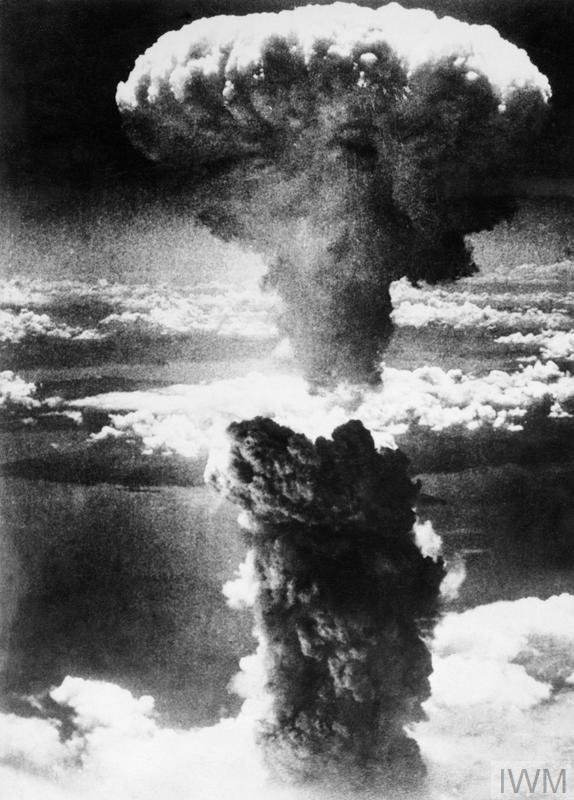The two atomic bombs that ended World War II
The first atomic bomb at Hiroshima

Hiroshima following the dropping of the atomic bomb on 6 August 1945.
At 8.15 on the morning of 6th August 1945, the Japanese city of Hiroshima was devastated by the first atomic bomb to be used as a weapon of war. The bomb, nicknamed Little Boy’, was dropped from the USAAF B29 bomberEnola Gay’ and exploded some 1,800 feet above the city. Delivering the equivalent of around 12.5 kilotons of TNT, the bomb reduced 5 square miles of the city centre to ashes and caused the deaths of an estimated 120,000 people within the first four days following the blast. Many were instantly vaporised by the explosion, others died afterwards from the effects of burns and radiation.
Three days later, just after 11 on the morning of 9th August, a second atomic bomb nicknamed Fat Man’ exploded above the city of Nagasaki. Although it was even more powerful thanLittle Boy’, the destruction caused by this bomb was less than at Hiroshima due to the nature of the terrain (the original target had been the city of Kokura, but the B29 carrying the bomb had been diverted to Nagasaki because of heavy cloud cover). Nonetheless, over 2 square miles of the city were pulverised and some 73,000 people killed.
Destruction at Nagasaki

A general view of Nagasaki looking towards the hypocentre, a mile behind the Mitsubish Armament and Steel Works, seen across the Urakami River in the centre background. In the foreground is the shell of the Mitsubishi Woodworking Plant, which was unharmed by the blast, but was gutted by fire.
© IWM MH 29411
A general view of Nagasaki looking towards the hypocentre, a mile behind the Mitsubish Armament and Steel Works, seen across the Urakami River in the centre background.
Image: IWM (MH 29411)
A general view of Nagasaki looking towards the hypocentre, a mile behind the Mitsubish Armament and Steel Works, seen across the Urakami River in the centre background. In the foreground is the shell of the Mitsubishi Woodworking Plant, which was unharmed by the blast, but was gutted by fire.

The two atomic explosions had the effects desired by the Allies. On 10th August the Japanese government indicated its readiness to accept defeat, subject to certain conditions. On 14th August it finally accepted the demand for unconditional surrender. The following day was declared `Victory over Japan’ or VJ Day, although it was not until 2nd September that the final Japanese surrender was signed, thereby bringing the Second World War to a formal close.
Why had the Allied powers considered it necessary to inflict such unprecedented destruction on Japanese civilians in order to bring the war to an end? At the Potsdam Conference (17th July – 2nd August 1945) the Allies formulated their terms for ending the war with Japan, which centred on that country’s acceptance of unconditional surrender, as had been the case with Nazi Germany in May.
However, the Allies were also aware that whilst the Japanese Emperor Hirohito desired an end to hostilities, and would probably accept the unconditional capitulation demanded, the `hawks’ of the Japanese military and civilian leadership were totally opposed to such a humiliating condition and were ready to fight to the finish – whatever that might look like.
Photos and history from https://www.iwm.org.uk/history/the-atomic-bombs-that-ended-the-second-world-war